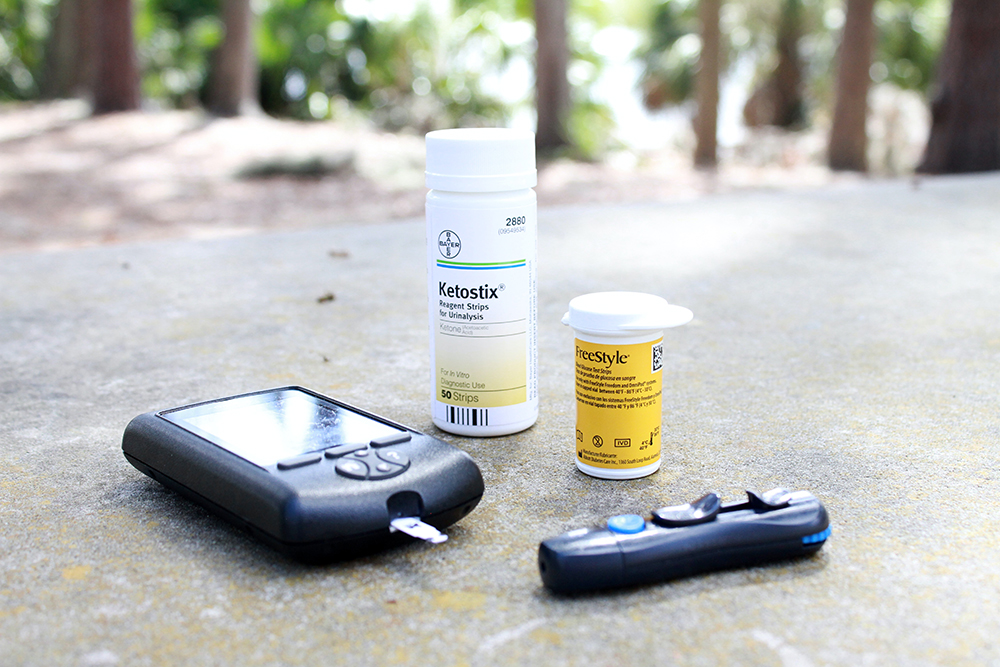
Diabetes affects over 34 million people in the United States. That means that out of every 10 people you encounter in a day, it’s likely…
Diabetes affects over 34 million people in the United States. That means that out of every 10 people you encounter in a day, it’s likely that 1 of them has been diagnosed with diabetes! Imagine sitting in a busy restaurant or walking down a city street – that’s a lot of people!
Diabetes is not something we ‘catch’ like a cold or flu. It is a condition that silently develops over time. There are many ways in which we can prevent and even reverse some forms of diabetes related blood sugar dysregulation by simply improving diet and lifestyle!
Let’s go over some common questions and misconceptions about diabetes!
Are all forms of diabetes the same?
There are many types of diabetes including Type I, Type II, prediabetes, and gestational diabetes. Type I and II are the main forms of diabetes. Type I diabetes is a condition that someone is born with. Although it might not be diagnosed until childhood or even during the teenage years, it is an inherent inability for the cells of the pancreas to produce a hormone called insulin. Insulin is the hormone that acts as an escort, allowing sugar (also referred to as glucose) to travel from the blood and into the cells to be used as energy. In those with Type II diabetes, the body becomes insulin resistant over time. With prolonged high blood sugar levels, the body tries to overcompensate by making more and more insulin. This works for some time, but it is not sustainable. Eventually, the cells that make insulin become overworked and dysfunctional. This is where people start to see elevated blood sugar levels on blood work, usually leading to a diagnosis of Type II diabetes.
Since almost everyone in my family has diabetes, can I really avoid that diagnosis?
Type II diabetes is what is considered to be a lifestyle disease. This means that despite genetics, we can largely control whether or not we develop this condition through diet and lifestyle. Genetics and family history can predispose someone to this condition, making it more likely that they can develop it. This being said, just because something can happen does not mean that it will! People of the same family often develop similar conditions because of the genetic risk factors, but what makes a bigger impact, in this case, is the way that families all cook, eat, and live on a daily basis. Many families share recipes and eat in a similar fashion and this is what also causes that family history. Learning to eat a diet rich in whole foods such as fruits, vegetables, whole grains, nuts and seeds, beans and legumes, and lean meats is crucial for optimal health!
If I do get diabetes, I just have to take a pill daily and I’ll be fine, right?
A diagnosis of diabetes will almost always be followed by a prescription for medication. These medications work on the liver and kidneys to get sugar out of the blood in various ways. These medications are very effective at getting blood sugar levels under control, but over the long term, they can cause a variety of side effects including liver and kidney damage, vitamin B12 deficiency, anemia, and neuropathy in older populations. It is more beneficial to the patient to use the medication to get blood sugar levels under control while making diet and lifestyle changes to maintain healthy blood sugar levels. Never stop your medication without your prescribing doctor’s approval. Making lifestyle changes can prompt your doctor to reduce or even eliminate some medications!
I don’t have diabetes, so I don’t need to monitor my blood sugar levels, right?
Blood sugar levels are constantly rising and dropping as we eat food throughout the day and go without food during the night. It is important to keep an eye on your levels as you run your yearly blood work with your doctor. Just because your levels are within the normal range, doesn’t mean they are staying the same! It can take years for your body to become dysfunctional so keeping an eye on rising levels, even within normal ranges, can provide you with an opportunity to make some diet and lifestyle changes and avoid a diabetes diagnosis.
Now that we have gone over some of the ins and outs of diabetes, what are some things that you or someone you know can do to maintain healthy blood sugar levels and improve overall health and longevity?
– Eat more whole foods!
- Focusing on eating more whole foods in the forms of fruits and vegetables, whole grains, beans and legumes, nuts and seeds, and lean meats is crucial for health and wellness! Diets high in these foods will boast more vitamins, minerals, and fiber!
- Cut back on the animal protein and replace a few servings per week with plant-based options allowing for a slow and steady release of energy rather than a big spike which causes blood sugar levels to rise.
- Aim for ½ of your plate to be vegetables and fruits for maximum fiber!
- Eat a minimum of 30g of fiber each day! If you are eating less than that now, increase your fiber by 2-3g every few days to avoid any digestive discomfort!
– Get moving!
- Exercise has been shown to improve blood sugar levels in those with diabetes after a meal. Taking a 10-minute walk after each main meal was shown to have a greater lowering effect on blood sugar levels after meals than taking one 30-minute walk during the day. Engaging the muscles while there are higher levels of sugar in the blood is beneficial in the sense that it promotes those muscle cells to take in and use that sugar for energy.
– Know your values!
- Empower yourself and your loved ones. We all know how scary it can be to go to the doctor or have tests run, but in the long term, you might be able to prevent something more serious from happening. Ask your doctor to check your blood sugar levels and A1c.
- A1c is a value that indicates the average of your blood sugar over the last 3-4 months. This gives us more insight into how your body handles blood sugar on a longer-term basis.
If you are concerned that you or a family member might have elevated blood sugars, or if you have a family history of diabetes and you are looking to make some changes but don’t know where to start, we are here to help!
Book an appointment with one of our Registered Dietitians or Nutritionists and we can guide you on your path to optimal health, wellness, and vitality!
We wish you all health, wellness, and Vitality!
— The Vitality Nutrition and Wellness Center Team
References
Chaudhury, A., Duvoor, C., Reddy Dendi, V. S., Kraleti, S., Chada, A., Ravilla, R., Marco, A., Shekhawat, N. S., Montales, M. T., Kuriakose, K., Sasapu, A., Beebe, A., Patil, N., Musham, C. K., Lohani, G. P., & Mirza, W. (2017). Clinical Review of antidiabetic drugs: Implications for type 2 diabetes mellitus management. Frontiers in endocrinology, 8, 6. https://doi.org/10.3389/fendo.2017.00006
Reynolds, A.N., Mann, J.I., Williams, S. et al. Advice to walk after meals is more effective for lowering postprandial glycaemia in type 2 diabetes mellitus than advice that does not specify timing: a randomised crossover study. Diabetologia 59, 2572–2578 (2016). https://doi.org/10.1007/s00125-016-4085-2


0 Comments